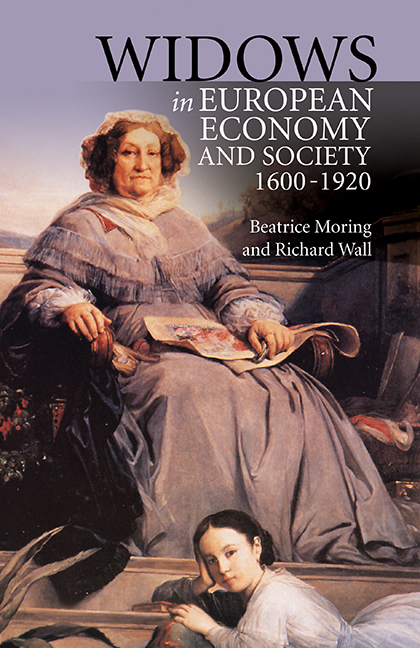Book contents
- Frontmatter
- Contents
- List of Plates
- List of Tables
- Acknowledgements
- Introduction
- 1 Widows and Poverty
- 2 Widows, Legislation and Property
- 3 Assessing the Assets of the Widow
- 4 Life Interest, Usufruct or Pension, The Mainstay of the Widow?
- 5 Urban Widows, Economy and Family
- 6 The Demography of Widowhood
- 7 Household Structure, Age, Social Status and Geography
- Conclusion
- Appendices
Introduction
Published online by Cambridge University Press: 30 August 2017
- Frontmatter
- Contents
- List of Plates
- List of Tables
- Acknowledgements
- Introduction
- 1 Widows and Poverty
- 2 Widows, Legislation and Property
- 3 Assessing the Assets of the Widow
- 4 Life Interest, Usufruct or Pension, The Mainstay of the Widow?
- 5 Urban Widows, Economy and Family
- 6 The Demography of Widowhood
- 7 Household Structure, Age, Social Status and Geography
- Conclusion
- Appendices
Summary
WHEN Barbe-Nicole Clicquot, née Ponsardin, lost her husband in 1805, she was 27 years old and found herself in control of a company involved in banking, the wool trade and champagne production. In her hands, and through economic collaboration with family members, the company concentrated on winemaking, introducing innovations (some inventions her own) and improvements to the product. She also extended the market share of the company through exports, for example to Russia, while the Napoleonic Wars were raging. At the time of her death in 1866 the company was producing 750,000 bottles per year instead of the 100,000 annually when she took over. The brand Veuve Clicquot (the widow Clicquot) still exists today and is one of the most famous champagnes in the world.
Women like Barbe-Nicole Clicquot can be found throughout history, widows who were not shrinking violets, huddled in corners tearfully peeping out from under the widows’ veil, but mothers, grandmothers and businesswomen who took on the world dominated by men. One of the aims of this book is to remind readers of their existence.
Women, Families and Individuals
In present-day western society the nuclear family has become both an ideal and a myth, particularly favoured by the advertisement industry. Smiling families enjoying a family day out, a family night in, a family meal, the new car, etc, populate our television screens every night. Despite statistics about family break-up, ageing, etc, we are continuously told that this is what we should aspire to, that this is what is ‘normal’.
The normalisation of the nuclear family as a domestic haven was generated in the nineteenth century, as was the restructuring of the roles of the participants: the father, active in the world; the mother, isolated in the home; the child, passive, quiet and decorative, no longer a working participant in the family; the home, purged of outsiders like apprentices and ‘outside’ kin. Servants were allowed, but no longer sharing sleeping quarters or the family table, instead relegated to cellars and attics. It would seem that this ideal did not always fit the reality, but the image was triumphant and lives with us still today.
- Type
- Chapter
- Information
- Widows in European Economy and Society, 1600-1920 , pp. 1 - 18Publisher: Boydell & BrewerPrint publication year: 2017

